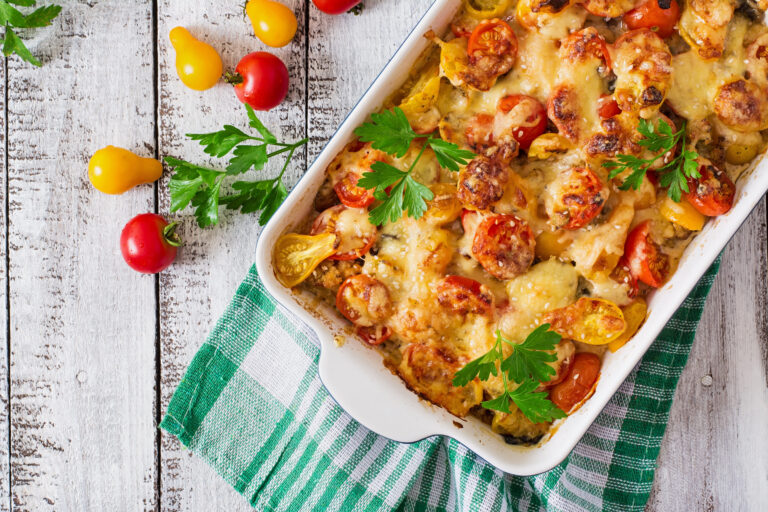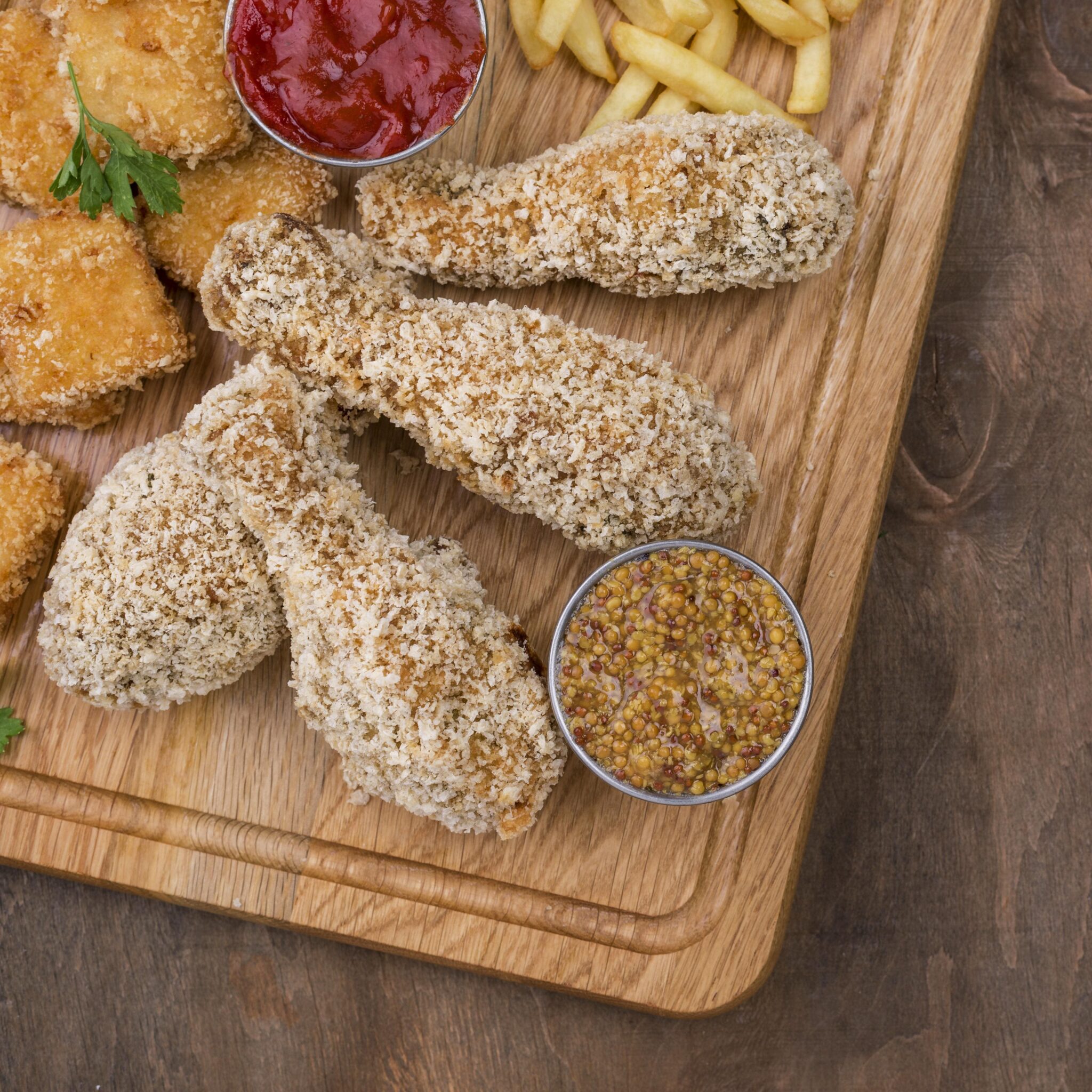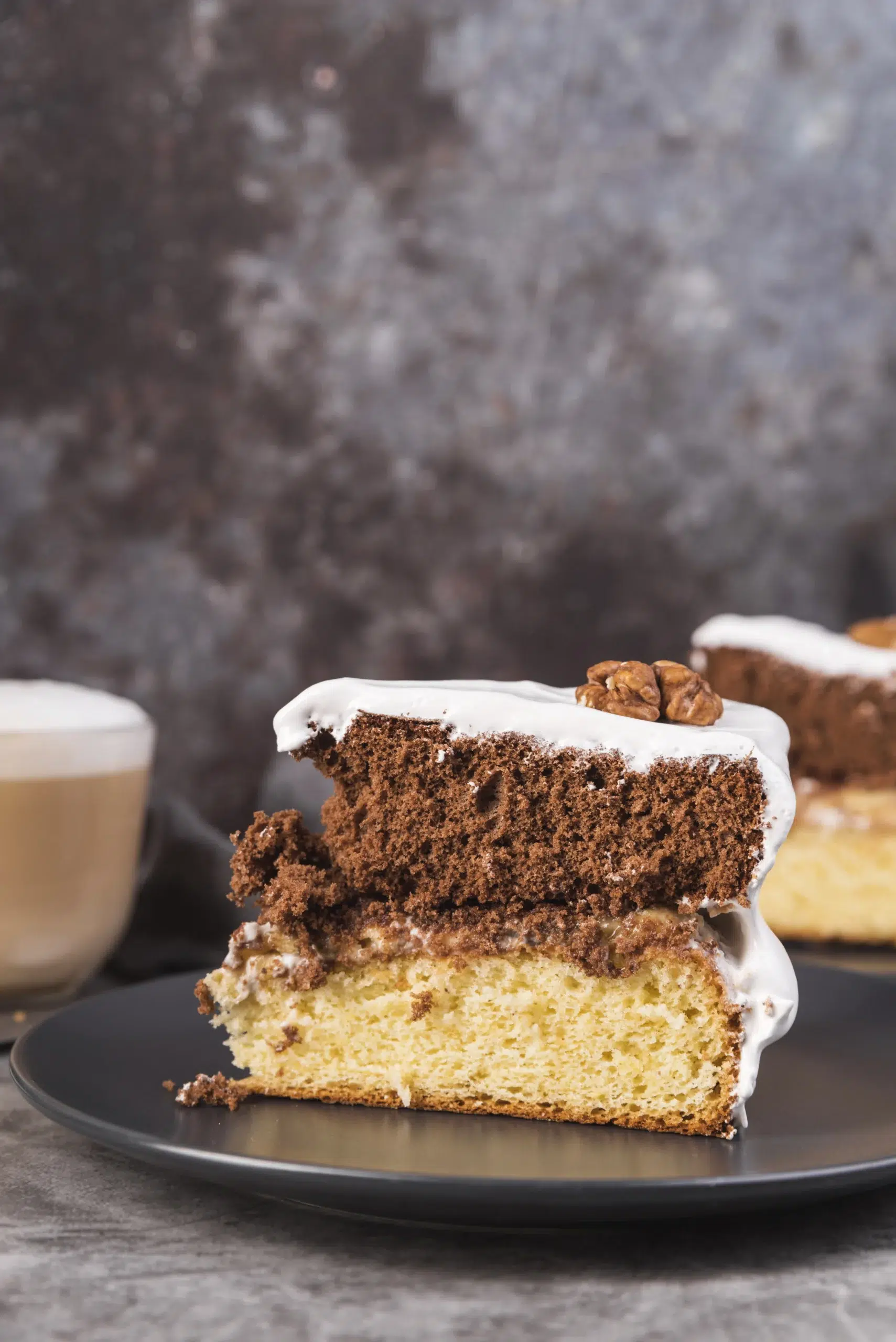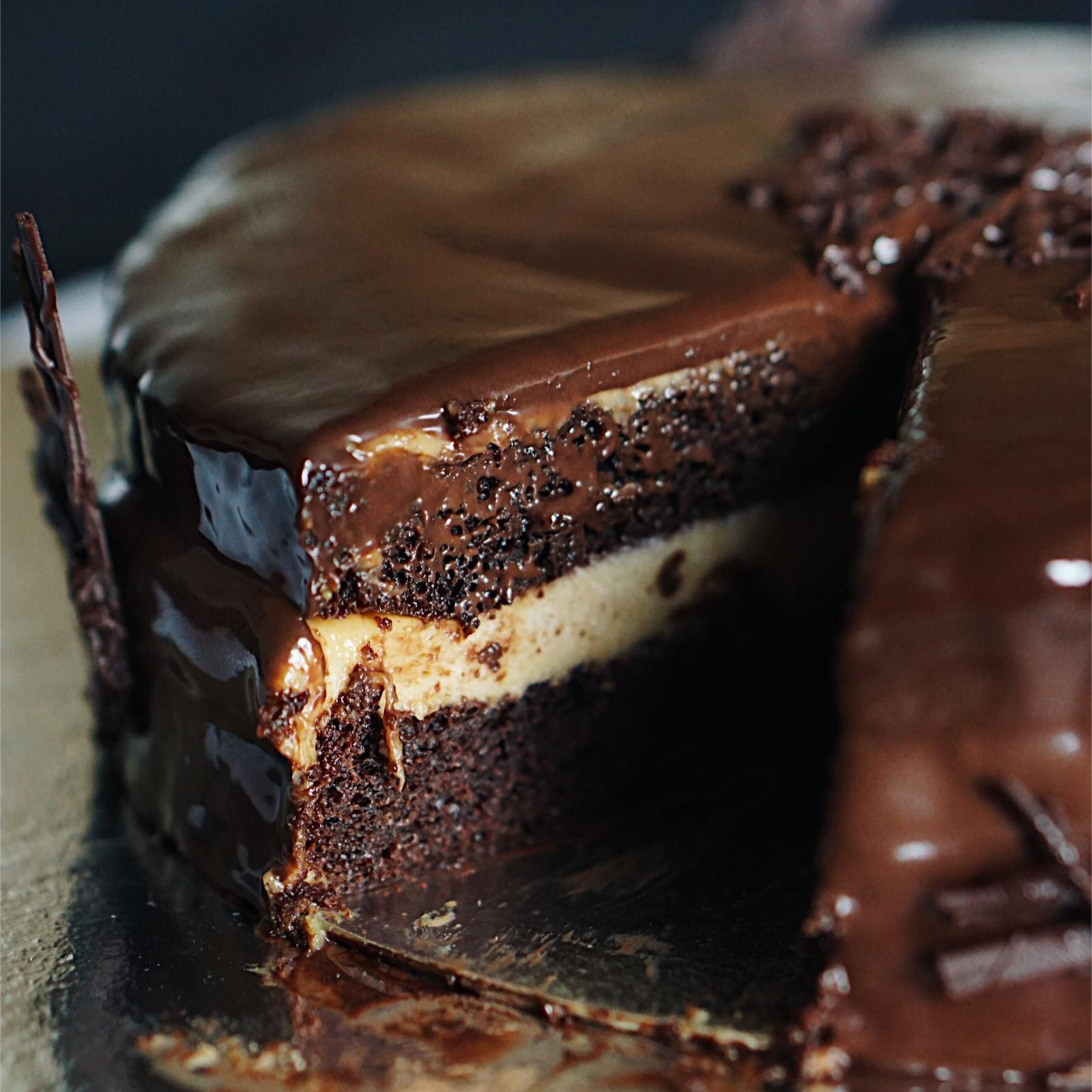Introduction
There’s something undeniably comforting about a warm, cheesy dish of pasta baked to perfection. Pasta baked dishes have been a staple in kitchens worldwide for generations, offering a hearty and satisfying meal for any occasion. Whether you’re looking for traditional recipes like lasagna or want to experiment with a modern twist, these dishes deliver both flavor and ease. Explore the history of baked pasta in Italian cuisine to understand its timeless appeal.
One of the greatest appeals of pasta baked recipes lies in their versatility. You can tailor them to suit any palate, dietary preference, or available ingredients. From classic options like baked ziti and lasagna to innovative takes like vegan-friendly or low-carb versions, the possibilities are endless. Plus, they’re a fantastic way to repurpose leftovers or make ahead for busy weeknights.
Pasta baked dishes are also surprisingly easy to prepare. With just a few basic ingredients like pasta, sauce, and cheese, you can create a meal that feels gourmet without spending hours in the kitchen. The process often involves assembling ingredients, layering flavors, and letting the oven do the hard work—resulting in a golden, bubbling masterpiece every time.
If you’re ready to explore the world of pasta baked dishes, this blog post is for you. Dive into easy-to-follow recipes, expert tips, and creative ideas to elevate your cooking game. By the end, you’ll have all the tools you need to make pasta baked your go-to dish for any occasion. Let’s get started!
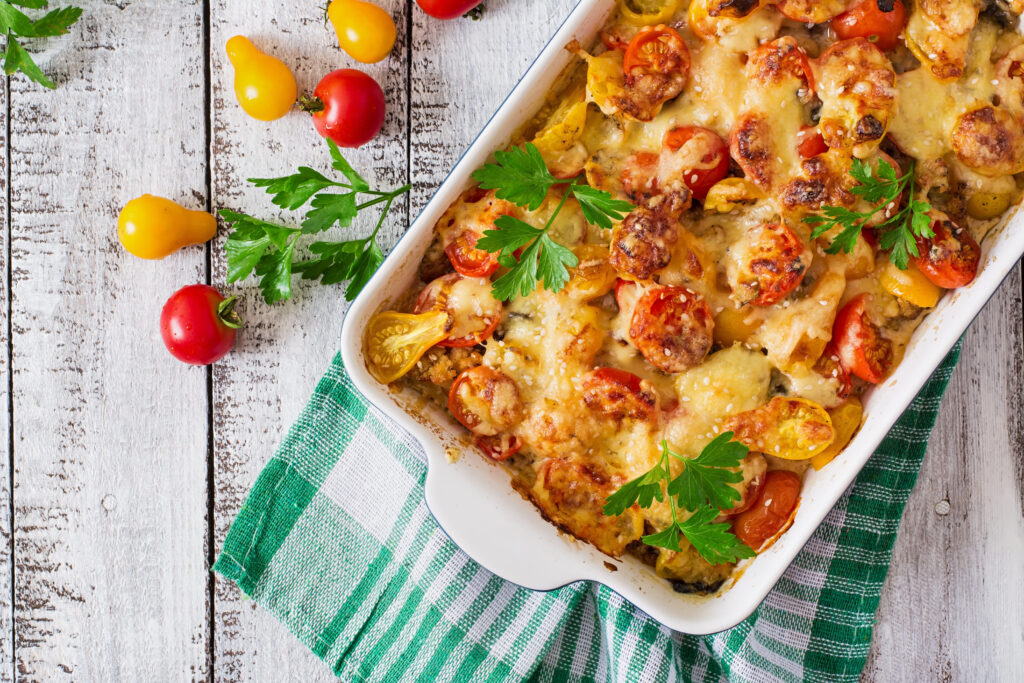
The Basics of Pasta Baked Dishes
What Is Pasta Baked?
Pasta baked dishes are hearty meals made by combining pasta with various ingredients like sauces, cheeses, and toppings, then baking everything together in the oven. This cooking method results in a flavorful and cohesive dish with a golden crust and gooey, melty interior. The combination of textures—crispy edges, creamy fillings, and perfectly cooked pasta—makes it a favorite across cuisines and cultures.
The origins of baked pasta can be traced back to Italy, where dishes like lasagna have been enjoyed for centuries. Lasagna, a layered pasta baked with rich sauces and cheeses, remains one of the most iconic examples. Over time, baked pasta dishes have evolved and spread globally, with popular examples including baked ziti from the U.S. and mac & cheese, a comfort food staple. These dishes have become a universal crowd-pleaser, showcasing their adaptability and timeless appeal.
Why Choose Pasta Baked for Your Meals?
There are countless reasons to choose pasta baked dishes as a go-to meal option.
- Convenience and Ease of Preparation
Pasta baked dishes are perfect for busy lifestyles. Most recipes require minimal prep time, and the oven takes care of the rest. This makes them ideal for weeknight dinners, family gatherings, or even meal prepping for the week ahead. - Customization Options
Baked pasta dishes are highly customizable, allowing you to cater to individual tastes or dietary restrictions. Add vegetables for a healthy twist, swap in gluten-free pasta, or use plant-based cheeses for vegan-friendly versions. The ability to mix and match ingredients ensures there’s a recipe for everyone. - Crowd Appeal
Few dishes are as universally loved as pasta bakes. The combination of rich flavors, creamy sauces, and melty cheese creates a dish that’s both comforting and indulgent, perfect for serving at parties, potlucks, or casual dinners.
Must-Have Ingredients for the Perfect Pasta Baked
To create the ultimate pasta baked dish, choosing the right ingredients is key. Here’s a breakdown of the essentials:
- Types of Pasta
- Penne: A classic choice with ridges that hold sauces well.
- Fusilli: Twisted shapes that trap cheese and sauce for extra flavor.
- Rigatoni: Large tubes perfect for layering and baking.
- Common Sauces
- Marinara Sauce: A tomato-based sauce that adds acidity and richness.
- Alfredo Sauce: Creamy and indulgent, perfect for chicken or vegetable-based bakes.
- Béchamel Sauce: A versatile white sauce that serves as the base for many recipes.
- Cheeses That Melt Perfectly
- Mozzarella: For that signature gooey texture.
- Parmesan: Adds a sharp, nutty flavor.
- Ricotta: Ideal for creamy layers in dishes like lasagna.
With these ingredients and tips, you’re well on your way to crafting a baked pasta masterpiece. Let the oven do its magic, and enjoy the comforting aroma and flavors of this timeless dish!
Top 5 Irresistible Pasta Baked Recipes to Try
Classic Baked Ziti Recipe
Step-by-Step Guide to Making This Classic Dish:
- Preheat your oven to 375°F (190°C).
- Boil ziti pasta until al dente, then drain and set aside.
- Prepare a rich marinara sauce with garlic, onions, and your favorite herbs like basil and oregano. Add cooked ground beef or sausage for a heartier dish.
- In a mixing bowl, combine ricotta cheese, shredded mozzarella, and grated parmesan. Mix well to create a creamy filling.
- Layer the pasta, sauce, and cheese mixture in a baking dish. Repeat layers until all ingredients are used, finishing with a generous topping of shredded mozzarella and parmesan.
- Bake for 25-30 minutes or until the cheese is bubbly and golden brown on top.
Tips for Achieving the Perfect Cheesy Crust:
- Use a blend of mozzarella and parmesan for flavor and texture.
- For an extra-crispy top, sprinkle breadcrumbs mixed with olive oil and herbs before baking.
- Broil for the last 2-3 minutes for a golden crust.
Creamy Chicken Alfredo Pasta Bake
Ingredients and Preparation Steps:
- Ingredients: Penne pasta, cooked chicken (shredded or diced), Alfredo sauce (store-bought or homemade), garlic, spinach, shredded mozzarella, and parmesan.
- Cook penne pasta until slightly underdone, as it will finish cooking in the oven.
- In a pan, sauté garlic and spinach until wilted, then mix with the cooked chicken and Alfredo sauce.
- Combine the pasta with the sauce mixture and transfer to a greased baking dish.
- Top with mozzarella and parmesan, then bake at 375°F (190°C) for 20-25 minutes.
Tips for Achieving a Creamy Texture:
- Use freshly made Alfredo sauce with heavy cream and butter for the best results.
- Stir in a dollop of cream cheese for added richness.
- Cover the dish with foil for the first 15 minutes to prevent the top from drying out.
Vegan-Friendly Pasta Baked Recipe
Substituting Dairy and Meat Ingredients:
- Replace traditional cheese with plant-based options like cashew cheese, almond-based ricotta, or nutritional yeast for a cheesy flavor.
- Use hearty vegetables like mushrooms, zucchini, or eggplant for texture.
- Incorporate plant-based protein like lentils or chickpeas for a filling dish.
Flavor-Enhancing Tips for Plant-Based Options:
- Roast vegetables before adding them to intensify their flavor.
- Add spices like smoked paprika, nutritional yeast, or garlic powder to the sauce for extra depth.
- Drizzle a touch of olive oil on top before baking for a golden finish.
Healthy Spinach and Ricotta Pasta Bake
Nutritional Benefits of Adding Greens:
- Spinach is rich in iron, vitamins A and C, and antioxidants, making this dish both delicious and nutritious.
- Combining spinach with ricotta provides a balance of protein, calcium, and fiber.
How to Maintain Flavor While Reducing Calories:
- Use whole-grain or chickpea pasta for added fiber and protein.
- Opt for part-skim ricotta and reduced-fat mozzarella.
- Enhance flavors with fresh herbs like basil, parsley, and oregano instead of relying on extra cheese or salt.
- Sauté spinach with garlic and a pinch of red pepper flakes to boost flavor before adding it to the dish.
Kid-Friendly Mac & Cheese Bake
Tips for Picky Eaters:
- Use small pasta shapes like elbow macaroni or shells that are easy to eat.
- Blend cooked vegetables like cauliflower or butternut squash into the cheese sauce to make it creamier and sneak in some nutrients.
- Add a topping of crushed crackers or panko breadcrumbs to make the dish fun and crunchy.
Adding Veggies for Hidden Nutrition:
- Steam and puree carrots, sweet potatoes, or broccoli and mix them into the cheese sauce.
- Chop spinach or kale finely and stir it into the pasta before baking.
- Use mild-flavored cheeses like cheddar to mask any vegetable flavors that might deter picky eaters.
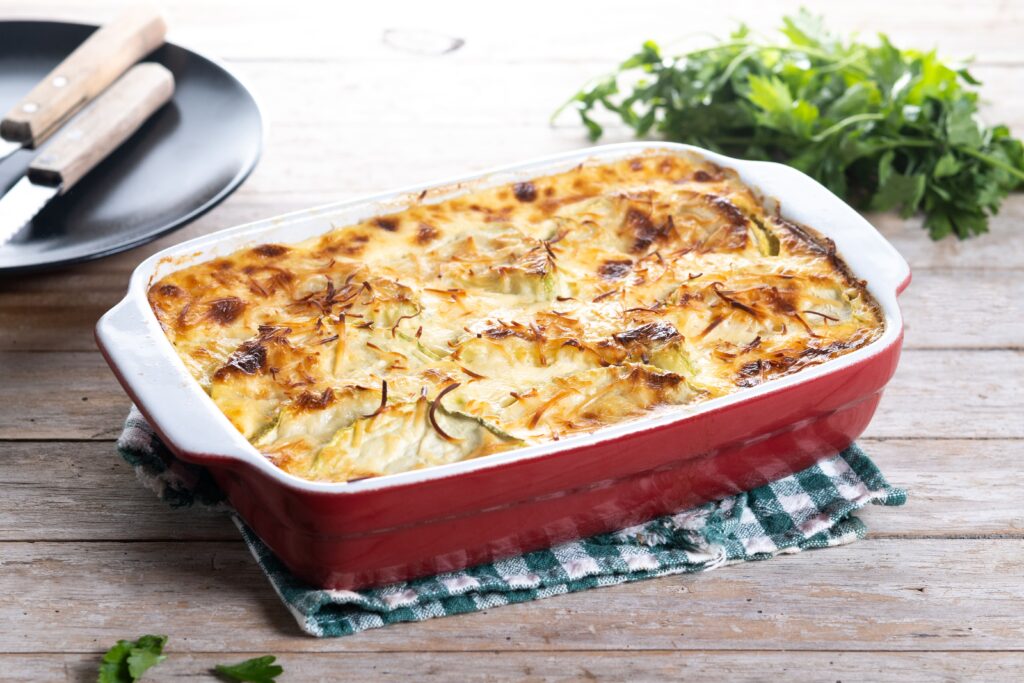
Tips and Tricks for the Best Pasta Baked Results
Choosing the Right Pasta Shape
The shape of pasta you choose can significantly impact the overall texture and flavor of your baked dish. Certain shapes are better suited for holding sauces, while others excel at providing structural integrity for layered bakes.
- How Different Shapes Affect Texture and Sauce Absorption:
- Tube-shaped pastas (e.g., ziti, rigatoni, penne): These shapes are ideal for pasta baked dishes because their hollow centers and ridges trap sauce and cheese, ensuring every bite is flavorful.
- Short, curved pastas (e.g., macaroni, cavatappi): These are perfect for creamy bakes like mac & cheese. Their compact size and twists hold creamy sauces beautifully.
- Flat pastas (e.g., lasagna sheets): Best for layered dishes like lasagna, these provide structure and a balance of pasta, sauce, and fillings.
- Twisted pastas (e.g., fusilli, rotini): Their spirals cling to sauces, making them excellent for lighter, oil-based or chunky tomato sauces in baked dishes.
Layering for Maximum Flavor
The way you layer your ingredients can make or break a baked pasta dish. Proper layering ensures even distribution of flavors and textures throughout.
- Best Practices for Layering Pasta, Sauce, and Cheese:
- Start with a Sauce Base: Always begin with a thin layer of sauce at the bottom of your baking dish. This prevents the pasta from sticking to the pan and ensures a moist base.
- Alternate Pasta and Sauce: Add a layer of pasta, followed by a generous scoop of sauce. Make sure the pasta is well-coated to avoid dryness.
- Cheese Between Layers: Sprinkle shredded cheese or dollops of ricotta between layers for creaminess and flavor. This also helps bind the layers together.
- Top Layer Perfection: Finish with a hearty layer of cheese on top—mozzarella for meltiness, parmesan for sharpness, or a blend for complexity. Adding breadcrumbs mixed with olive oil and herbs can provide a crispy topping.
Avoiding Common Mistakes
Even seasoned cooks can run into issues when making pasta baked dishes. Here’s how to avoid the most common pitfalls:
- Preventing Dry or Soggy Pasta:
- Use enough sauce to coat the pasta thoroughly, as the baking process can dry out the dish. A slightly loose sauce works best because it will thicken as it bakes.
- Undercook the pasta by 1-2 minutes when boiling it. This prevents the pasta from becoming mushy during baking.
- Cover the dish with foil for the first half of baking to retain moisture, then remove it to allow the top to brown.
- Ensuring Even Cooking and Browning:
- Spread the ingredients evenly across the dish to avoid overcooking some areas while others remain undercooked.
- Rotate the dish halfway through baking if your oven has uneven heat distribution.
- Broil the dish for the final 2-3 minutes to achieve a golden, bubbly top without drying out the pasta underneath.
- Avoiding Overcrowding the Dish:
- Use the right-sized baking dish for your recipe. Overcrowding can lead to uneven cooking, while a dish that’s too large may result in thin, dry layers.
Customizing Pasta Baked for Special Diets
Gluten-Free Options
Adapting pasta baked dishes for a gluten-free diet is easier than ever, thanks to the availability of high-quality gluten-free pasta and other alternatives.
- Best Gluten-Free Pasta Brands for Baking:
- Barilla Gluten-Free Pasta: Made with a blend of corn and rice, this brand offers a firm texture that holds up well in baked dishes.
- Banza Chickpea Pasta: High in protein and fiber, this pasta is a nutritious and sturdy choice for baking.
- Tinkyada Brown Rice Pasta: Known for its neutral flavor and durability, this pasta works wonderfully in layered dishes like lasagna.
- Adjusting Cooking Times for Gluten-Free Pasta:
- Gluten-free pasta tends to cook faster and is more prone to becoming mushy. Boil it for 1-2 minutes less than the package instructions, especially when baking it later.
- Since gluten-free pasta can sometimes absorb more sauce, use a slightly looser sauce to maintain the dish’s moisture during baking.
Low-Carb Alternatives
For those on a low-carb diet, substituting traditional pasta with vegetables or alternative noodles can transform your pasta baked dish into a lighter, healthier option without sacrificing flavor.
- Using Zucchini Noodles or Spaghetti Squash:
- Zucchini Noodles: Spiralized zucchini offers a tender, pasta-like texture and absorbs sauces well. Lightly sauté or salt the noodles beforehand to remove excess moisture.
- Spaghetti Squash: Roasted spaghetti squash can be scraped into strands and used as a low-carb base for your baked dish. Its mild flavor pairs beautifully with rich sauces and cheese.
- Tips for Maintaining Flavor with Fewer Carbs:
- Roast vegetable noodles like zucchini or eggplant before layering them in your bake to enhance their flavor and prevent them from becoming watery.
- Add protein-packed ingredients like ground turkey, grilled chicken, or tofu to create a filling, satisfying meal.
- Incorporate bold herbs and spices like garlic, basil, oregano, and smoked paprika to elevate the dish’s taste.
Dairy-Free and Vegan Substitutions
Creating a dairy-free or vegan pasta baked dish is simple and delicious with the right ingredients and techniques.
- Best Plant-Based Cheeses for Baking:
- Violife Mozzarella Shreds: Known for its meltability and mild flavor, this plant-based cheese is excellent for pasta baked dishes.
- Daiya Cheddar and Mozzarella Blends: Offers a creamy texture and bold flavor, making it a favorite for vegan bakes.
- Nutritional Yeast: While not a cheese substitute per se, it adds a cheesy, nutty flavor that enhances the dish.
- Creamy Sauce Alternatives:
- Cashew Cream: Blend soaked cashews with water, garlic, and a touch of lemon juice for a velvety sauce that mimics Alfredo.
- Almond Milk Béchamel: Use unsweetened almond milk and vegan butter to create a dairy-free white sauce perfect for layering.
- Coconut Milk: For a slightly sweeter, rich base, coconut milk works well, especially in curry-inspired or spiced pasta bakes.
Pro Tip: Balance the richness of plant-based alternatives by incorporating vegetables like roasted tomatoes, spinach, or mushrooms for added flavor and texture.
Quick and Easy Pasta Baked Recipes for Busy Weeknights
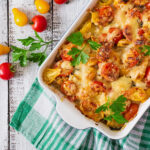
This no-fail recipe for roast duck with orange glaze delivers tender meat, crispy skin, and a perfectly balanced sweet-tangy glaze. Easy to follow, it's ideal for special occasions or an indulgent meal. Learn preparation tips, glazing techniques, and serving ideas to make this dish a standout success. Perfect for both beginner and experienced cooks!
Frequently Asked Questions About Pasta Baked
Can I Prepare Pasta Baked in Advance?
Yes, pasta baked dishes are an excellent make-ahead meal option, making them perfect for busy schedules, dinner parties, or meal prepping.
- How to Prepare in Advance:
- Assemble the dish completely, including all layers of pasta, sauce, and cheese, but do not bake it.
- Cover the unbaked dish tightly with aluminum foil or plastic wrap and store it in the refrigerator for up to 24 hours before baking.
- Storage Tips for Prepped Pasta Baked Dishes:
- Use an airtight container or a baking dish with a lid to keep the dish fresh and prevent the sauce from drying out.
- If you plan to store it longer, consider freezing it (see freezer tips below).
- Reheating Tips for Prepped Dishes:
- If the dish is refrigerated, let it sit at room temperature for 20-30 minutes before baking to ensure even heating.
- Bake the dish covered at 375°F (190°C) for 25-30 minutes, then uncover and bake for an additional 10-15 minutes to brown the top.
What’s the Best Way to Reheat Pasta Baked?
Reheating pasta baked dishes can be done effectively without losing flavor or texture. The method you choose depends on the time you have and the equipment available.
- Oven Reheating:
- Best for: Larger portions or entire dishes.
- Preheat the oven to 350°F (175°C).
- Place the pasta in an oven-safe dish, cover with aluminum foil to retain moisture, and bake for 20-30 minutes. Remove the foil for the last 5-10 minutes to crisp up the top.
- Pro Tip: Add a splash of water, milk, or sauce to the dish before reheating to prevent it from drying out.
- Microwave Reheating:
- Best for: Single servings or when short on time.
- Place a portion of pasta in a microwave-safe dish, cover it loosely with a microwave-safe lid or damp paper towel, and heat on medium power for 2-3 minutes. Stir halfway through to ensure even heating.
- Pro Tip: Adding a small amount of sauce or cheese on top before microwaving can refresh the flavor and texture.
- Stovetop Reheating (for Saucy Bakes):
- Transfer the pasta to a nonstick skillet, add a bit of sauce or water, and reheat over low-medium heat, stirring occasionally. This method works best for dishes with more sauce and less cheese topping.
How Long Can Pasta Baked Be Stored?
Proper storage is crucial to maintaining the flavor and quality of your pasta baked dishes. Here’s a guide to how long they last and how to store them:
- In the Fridge:
- Cooked pasta baked dishes can be stored in the refrigerator for 3-5 days in an airtight container.
- Before storing, allow the dish to cool completely to prevent condensation, which can make it soggy.
- In the Freezer:
- Pasta baked dishes can be frozen for 2-3 months for best quality. Use a freezer-safe, airtight container or wrap the dish tightly in plastic wrap and aluminum foil to prevent freezer burn.
- Freezing Tips: If freezing an unbaked dish, slightly undercook the pasta during preparation to ensure it doesn’t become mushy when baked later.
- Label the container with the date and contents for easy reference.
- Defrosting and Reheating from Frozen:
- For best results, thaw the dish in the refrigerator overnight before reheating.
- Bake at 375°F (190°C) for 45-60 minutes if reheating directly from frozen, covering it with foil initially to retain moisture, then uncovering for the last 10-15 minutes to brown the top.
By following these guidelines, you can enjoy your pasta baked dishes at their freshest and most delicious, whether you’re preparing in advance, reheating leftovers, or storing them for later enjoyment!
Conclusion
Pasta baked dishes are the epitome of comfort food, combining rich flavors, creamy textures, and a golden, bubbly top that’s hard to resist. Whether you’re a beginner in the kitchen or a seasoned cook, these dishes offer endless possibilities to showcase your creativity and satisfy any craving. From classic recipes like baked ziti and lasagna to innovative options like vegan-friendly bakes and low-carb alternatives, there’s truly a pasta baked dish for every taste, occasion, and dietary need.
The beauty of pasta baked dishes lies in their versatility. You can customize them to suit your preferences, incorporate leftover ingredients, or adapt them for special diets—all while enjoying the ease of preparation. With just a few basic ingredients and a little oven magic, you can create a meal that’s both satisfying and impressive. Plus, they’re a perfect make-ahead option for busy weeknights or gatherings, saving you time without sacrificing flavor.
We encourage you to take inspiration from the recipes and tips shared in this post and make them your own. Don’t be afraid to experiment with new ingredients, try unique flavor combinations, or even create your signature pasta baked dish. Cooking is as much about joy and exploration as it is about nourishment, so let your imagination guide you.
If you enjoyed this guide or tried any of the recipes, we’d love to hear about it! Share your creations, tips, or questions in the comments section below . Don’t forget to explore more of our Best Chicken Alfredo Pasta or check out our BBQ Chicken Pasta Salad . Snap a photo of your pasta baked masterpiece and share it on social media—tag us so we can celebrate your culinary success with you!
Happy cooking, and may your kitchen always be filled with the comforting aroma of freshly baked pasta!

